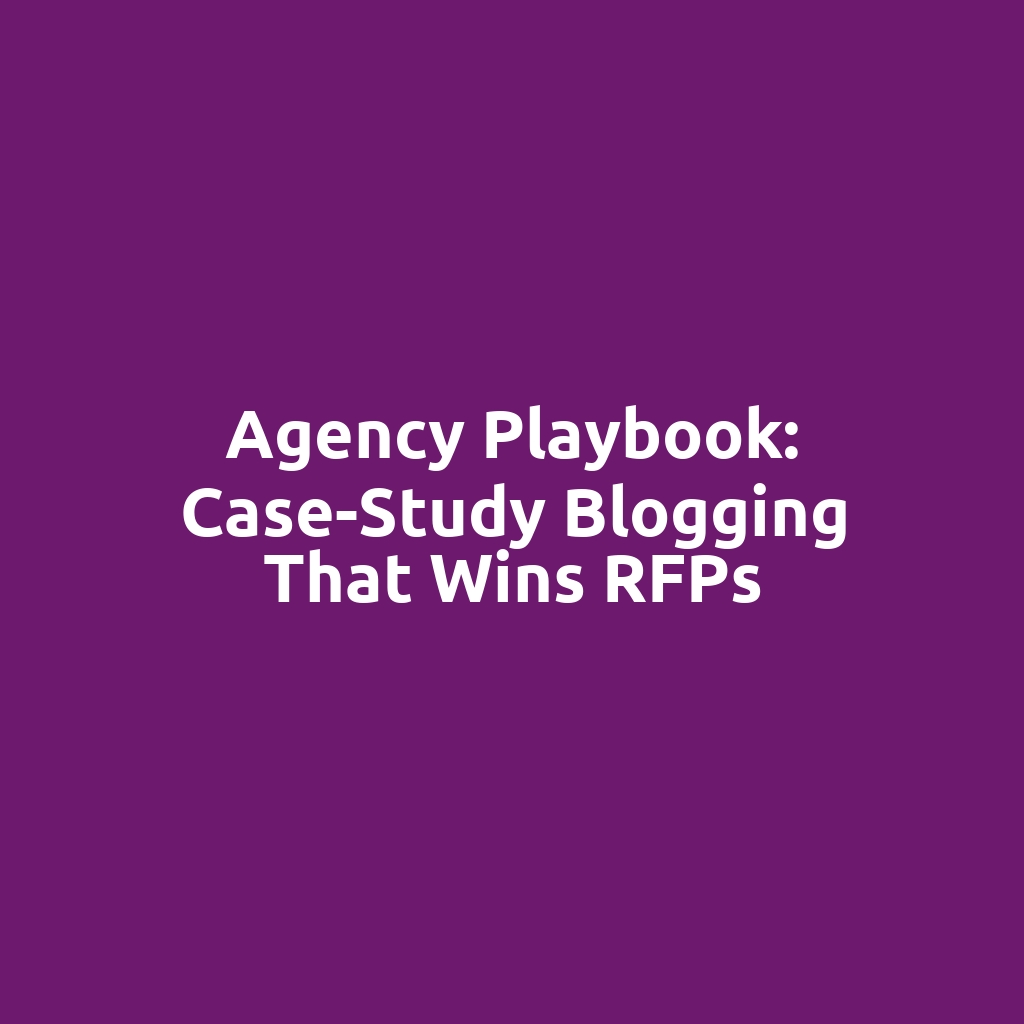When an agency wants to win a big project, they often respond to something called a Request for Proposal, or RFP. An RFP is like a job posting for companies. Agencies need to show they are the best choice for the job. One way to do this is through case-study blogging. This means they write about past projects they have done. They show how they solved problems and helped their clients. This is a part of their agency playbook. It helps them stand out and win RFPs. Let’s explore how case-study blogging works and why it’s important.
Understanding the Agency Playbook

An agency playbook is like a guide. It helps agencies know what to do to succeed. It includes strategies and tips. Agencies use it to win projects and impress clients.
One important part of the playbook is case-study blogging. This is when agencies write about their past work. They explain what they did, how they did it, and the results.
Case-study blogging is a way to show expertise. It helps agencies prove they can handle big projects. It also builds trust with potential clients.
Agencies use case studies to show their skills. They highlight their problem-solving abilities. They also show how they can deliver results.
Case-study blogging is not just about writing. It involves storytelling. Agencies tell stories about their projects. They make them interesting and easy to understand.
By using the agency playbook, agencies can win more RFPs. They can get more projects and grow their business.
Why Case-Study Blogging Matters

Case-study blogging is important for several reasons. It helps agencies stand out. It shows they are experts in their field.
When agencies write case studies, they build credibility. They show potential clients that they know what they are doing.
Case studies also help agencies connect with clients. They show clients that they understand their needs. They demonstrate that they can solve their problems.
Through case-study blogging, agencies can highlight their successes. They can share the results they achieved. This helps build trust with potential clients.
Case studies are also a way to showcase creativity. Agencies can demonstrate how they think outside the box. They can show how they come up with innovative solutions.
Overall, case-study blogging is a powerful tool. It helps agencies win RFPs and grow their business.
Creating Compelling Case Studies

Creating compelling case studies is key to winning RFPs. Agencies need to make their case studies interesting and engaging.
The first step is choosing the right projects to showcase. Agencies should select projects that had great results. They should choose projects that highlight their skills and expertise.
Next, agencies need to tell a story. They should explain the problem their client faced. They should describe how they solved the problem.
Agencies should also include data and statistics. This helps prove their success. It shows potential clients the impact of their work.
Visuals are also important. Agencies should include images and charts. This makes the case study more engaging.
Finally, agencies should include a call to action. They should encourage potential clients to reach out. This can help generate new business.
Using Case Studies to Win RFPs

Case studies are a powerful tool for winning RFPs. They help agencies show their expertise and success.
When responding to an RFP, agencies should include relevant case studies. They should choose case studies that match the client’s needs.
Agencies should also customize their case studies. They should tailor them to fit the specific RFP. This shows the client that they understand their needs.
Case studies can also help agencies stand out from the competition. They show potential clients why they are the best choice.
Agencies should also use case studies to highlight their unique selling points. They should show what sets them apart from other agencies.
Overall, case studies are a key part of winning RFPs. They help agencies prove their worth and secure new projects.
Examples of Successful Case Studies

Let’s look at some examples of successful case studies. These examples show how agencies can use case studies to win RFPs.
One example is an agency that helped a client increase their sales. The agency created a case study that showed how they improved the client’s marketing strategy. They included data and visuals to support their success.
Another example is an agency that helped a client launch a new product. The agency created a case study that highlighted their creative approach. They included testimonials from the client to show their satisfaction.
A third example is an agency that helped a client improve their website. The agency created a case study that showed how they increased the client’s website traffic. They included before and after visuals to demonstrate the impact.
These examples show the power of case studies. They demonstrate how agencies can use them to win RFPs and grow their business.
By creating compelling case studies, agencies can showcase their success and win more projects.
Key Takeaways from Case-Study Blogging

Case-study blogging is a powerful tool for agencies. It helps them win RFPs and grow their business.
Agencies should use case studies to showcase their expertise. They should highlight their successes and problem-solving abilities.
Case studies help build credibility and trust. They show potential clients that the agency knows what they are doing.
Agencies should create compelling case studies. They should include data, visuals, and a call to action.
Case studies can help agencies stand out from the competition. They show potential clients why the agency is the best choice.
Overall, case-study blogging is an important part of the agency playbook. It helps agencies win RFPs and secure new projects.
